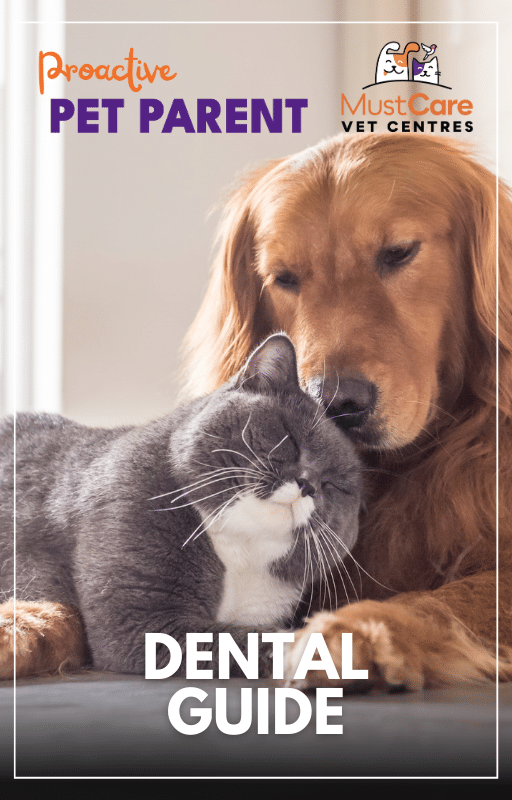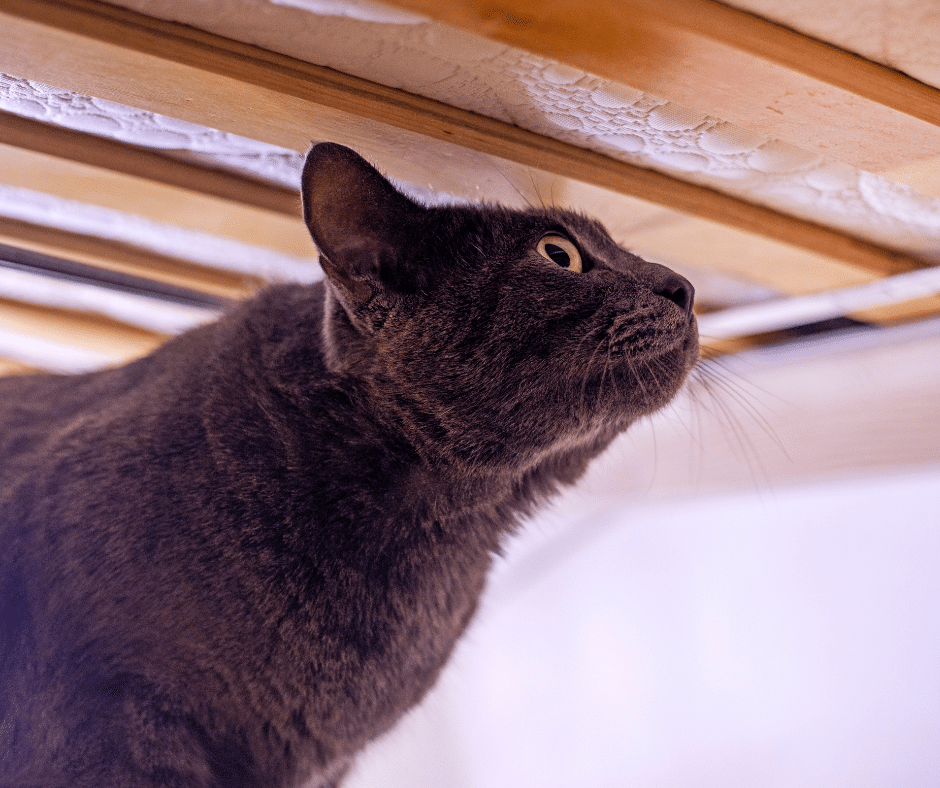Share This Blog With Other Pet Parents!
Soothing Pet Anxiety: Effective Calming Techniques
Scarily loud thunder or the pop of festive fireworks can send our furry friends into a frenzy, and it’s clear that pet anxiety is a real and pressing concern for many pet owners. Anxiety in pets can manifest in various ways, from pacing and whimpering to more destructive behaviours. Understanding and soothing this anxiety becomes a crucial part of ensuring their well-being. “Soothing Pet Anxiety: Effective Calming Techniques” delves into the heart of this issue, offering insightful, compassionate strategies to help your beloved pets navigate their fears. Whether it’s a storm brewing in the sky or the daily challenge of separation anxiety, this article aims to equip pet parents with practical, vet-approved methods to calm their anxious companions. We’ll explore signs to watch for, dispel myths, and address one of the most common yet often misunderstood aspects of pet care.
What you’ll learn from this blog:

For all you need to know, download our
FREE Dental Guide
This blog is part of our Proactive Pet Parent series! This is just the beginning… To see more blogs, click here! Better yet, sign-up to our newsletter to receive these directly to your inbox each month.
Sign-up To The Proactive Pet Parent Newsletter
Recognising Signs of Anxiety in Pets
Understanding the signs of anxiety in pets is the first step towards effective management. Anxiety in pets, much like in humans, can manifest in a variety of behaviours, some subtle and others more apparent. For many pets, a change in their normal behaviour is often the first indicator. Dogs may exhibit signs such as excessive barking, panting, drooling, or showing destructive tendencies like chewing furniture. Cats, on the other hand, might display their anxiety through over-grooming, hiding, or a decrease in appetite.
Physical symptoms are also telltale signs. Shaking or trembling, especially during thunderstorms or fireworks, can indicate fear. Likewise, excessive licking or grooming in pets can be a sign of stress. Another common behaviour is pacing or restlessness, which may be more noticeable in dogs. In more severe cases, pets might attempt to escape or run away, especially in response to loud noises or unfamiliar situations.
It’s crucial to observe these behaviours in context, as what might be normal in one situation could be a sign of anxiety in another. For instance, a dog that barks at the doorbell is not necessarily anxious, but if the barking is excessive and accompanied by other signs like pacing or trembling, it might be indicative of anxiety.
Understanding these signs helps pet owners identify when their pets are feeling anxious and take appropriate steps to help them. Early recognition and response can prevent the escalation of anxiety.
Common Triggers of Pet Anxiety
Identifying the triggers of pet anxiety is as vital as recognising the signs. Anxiety in pets can be sparked by a variety of factors, many of which are part of their daily environment. One of the most common triggers is loud noises, such as thunderstorms, fireworks, or even loud household appliances. These sounds can induce a state of fear and panic in many pets, particularly dogs and cats, who have more sensitive hearing.
Separation anxiety is another prevalent trigger, especially in dogs. This form of anxiety occurs when pets become distressed due to the absence of their owners. Signs include destructive behaviour, excessive barking or meowing, and restlessness. Changes in routine or environment, such as moving to a new home, can also lead to anxiety in pets. These changes disrupt their sense of security and familiarity, often resulting in anxious behaviours.
Other triggers include past traumas, such as abuse or abandonment, which can have long-lasting effects on a pet’s emotional well-being. In some cases, social anxiety can occur in pets who are not accustomed to being around other animals or people, leading to fearful or aggressive behaviours.
For owners, understanding these triggers is essential in managing and preventing anxiety in pets. By recognizing what causes anxiety, steps can be taken to minimise exposure to these triggers or to prepare pets in a way that reduces their stress. This proactive approach can significantly improve the quality of life for pets who suffer from anxiety, creating a more harmonious and stress-free environment for them and their owners.
Basic Calming Techniques
When it comes to managing pet anxiety, there are several basic yet effective calming techniques that pet owners can easily implement.
- Creating a safe space is one of the most straightforward methods. This involves designating a quiet, comfortable area in the home where the pet can retreat to when feeling anxious. For dogs, this could be a cosy corner with their favourite bed and toys. For cats, a high perch or a secluded nook can provide a sense of security.
- The use of soothing sounds can also be remarkably effective. Playing gentle, calming music or white noise can help drown out the external sounds that trigger anxiety in pets, such as thunder or fireworks. Additionally, some pets find the sound of a familiar, calm voice reassuring, so speaking to them in soft, comforting tones can be beneficial during anxious times.
- Gentle physical reassurance can also help soothe an anxious pet. This might include petting, stroking, or lightly massaging your pet in a way that they find comforting. However, it’s important to note that while some pets may seek physical comfort during times of stress, others may prefer to be left alone. Recognising and respecting your pet’s personal space is crucial.
- Another simple technique is distraction. Engaging your pet in a favourite game or offering them a special toy or treat can divert their attention away from the source of their anxiety. This approach is particularly useful in cases of mild anxiety and can be a helpful way to alleviate stress during potentially anxiety-inducing situations.
These basic techniques are not only easy to implement but also play a significant role in creating a supportive environment for pets experiencing anxiety. By incorporating these strategies into your pet care routine, you can help your pet navigate through stressful situations more comfortably and confidently.
Advanced Calming Strategies
For long-term management of pet anxiety, advanced calming strategies can be highly effective. These techniques require more involvement but offer sustainable solutions.
- Desensitisation is a key method, especially useful for pets with specific fears like loud noises or new environments. It involves gradually and gently exposing the pet to the source of their anxiety in controlled settings, thereby reducing their fear over time. This process must be done patiently and cautiously to avoid overwhelming the pet.
- Professional training and behavioural therapy are also invaluable in managing pet anxiety. Working with a professional trainer or behaviourist can provide tailored strategies based on the individual needs of the pet. These experts can help identify the root cause of the anxiety and develop a structured program to address it. Techniques used may include positive reinforcement, behaviour modification, and other specialised training methods.
- In some cases, consultation with a veterinarian is necessary, especially if the anxiety is severe. A veterinarian may recommend supplements or medications to help manage anxiety, particularly for pets that do not respond well to behavioural techniques alone. It’s important to understand that these medical interventions should be part of a comprehensive treatment plan, including behavioural strategies.
These advanced strategies emphasise the importance of a tailored approach to pet anxiety. Each pet is unique, and what works for one may not work for another. Therefore, understanding the specific needs and temperament of the pet is crucial in choosing the most effective method. With the right combination of techniques, significant progress can be made in alleviating pet anxiety.
Role of Diet and Exercise in Managing Anxiety
The role of diet and exercise in managing pet anxiety is often underestimated. A balanced diet and regular physical activity are foundational to a pet’s overall health and well-being, influencing their mental state significantly. Just like in humans, the right nutrition can affect a pet’s mood and energy levels. A diet lacking in essential nutrients or one that causes stomach discomfort can contribute to increased stress and anxiety in pets. Therefore, choosing a diet that suits your pet’s age, breed, and health condition is critical. Consultation with a veterinarian can help determine the best dietary plan.
Exercise plays a crucial role in reducing anxiety, particularly for high-energy breeds. Regular physical activity helps expend pent-up energy that could otherwise manifest as anxious behaviours. Activities like walking, playing fetch, or engaging in interactive play can significantly reduce stress levels in pets. Exercise also stimulates the production of endorphins, which are natural mood lifters. Adequate physical activity contributes to better sleep, which is essential for a pet’s emotional health.
Integrating mental stimulation into a pet’s routine is equally important. Puzzle toys, training sessions, and new experiences can keep their minds engaged and prevent boredom, a common trigger for anxiety. These activities not only provide entertainment but also enhance the pet’s cognitive health.
Incorporating a balanced diet and regular exercise into your pet’s routine is a holistic approach to managing anxiety. It ensures that your pet leads not only a physically healthy life but also a mentally stable one. Simple changes in diet and activity levels can make a significant difference in your pet’s overall demeanour, leading to a calmer, more content pet.
When to Seek Professional Help
Recognising when home strategies for managing pet anxiety are insufficient and when to seek professional help is crucial. While many cases of anxiety can be addressed with at-home techniques and lifestyle adjustments, some situations require the expertise of a veterinarian or a behavioural expert. Key indicators that professional intervention may be necessary include persistent symptoms of anxiety despite trying various at-home strategies, extreme behaviours such as aggression or self-harm, and any significant change in eating, sleeping, or elimination patterns.
Consulting a veterinarian is important to rule out any underlying medical conditions that could be contributing to the anxiety. Health issues like thyroid imbalances, neurological disorders, or chronic pain can manifest as anxiety-like symptoms. A thorough medical evaluation ensures that any such conditions are identified and treated appropriately.
Behavioural experts, such as certified animal behaviourists or trainers, specialise in understanding and modifying pet behaviour. They can provide tailored strategies based on an individual pet’s needs, which might include advanced training techniques or behaviour modification programs. These experts can also offer guidance and support to pet owners, helping them understand and effectively respond to their pet’s behaviour.
Seeking professional help has numerous benefits. It ensures a comprehensive approach to managing pet anxiety, addressing both the behavioural and physiological aspects. Professional guidance also provides peace of mind to pet owners, knowing that they are taking the right steps towards improving their pet’s quality of life. Early intervention by professionals can prevent the escalation of anxiety, leading to better long-term outcomes for the pet.
Understanding and proactively managing pet anxiety is an essential aspect of providing a nurturing environment for our pets. Recognising the signs of anxiety, being aware of common triggers, and implementing both basic and advanced calming techniques are key steps in this process. A balanced diet and regular exercise play a significant role in a pet’s mental health and well-being. However, it’s important to acknowledge when these at-home strategies are not enough and to seek professional help when necessary.

